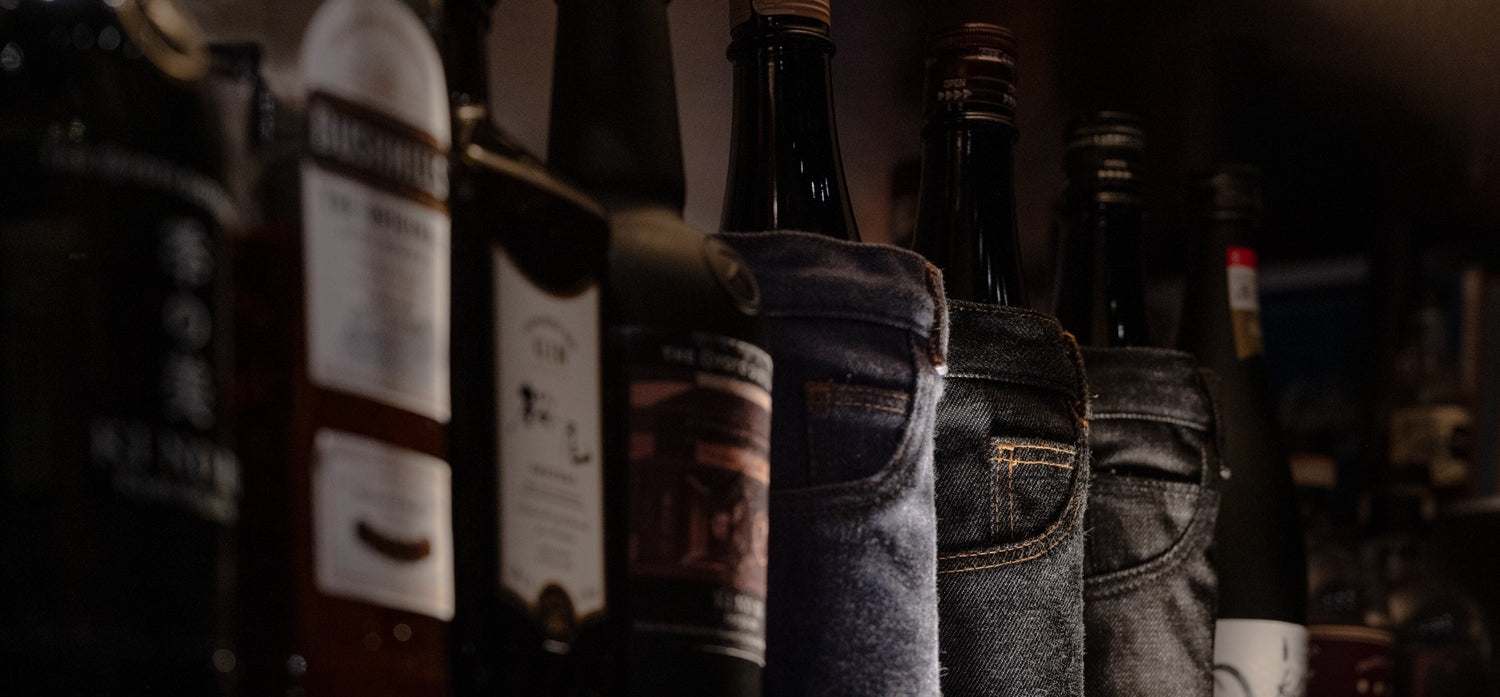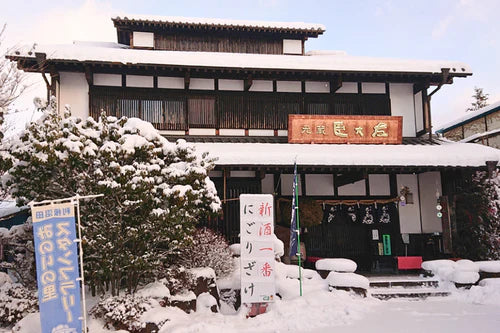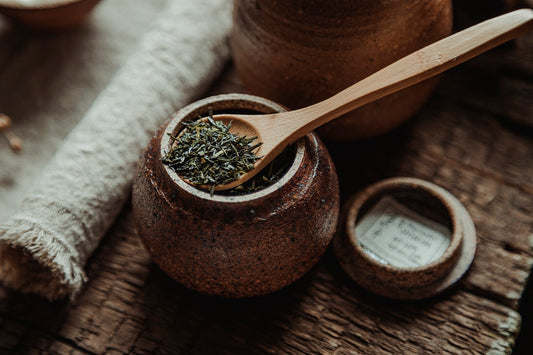Selecting the right bottle of sake can often be overwhelming, whether browsing an online store, a liquor shop, or perusing a restaurant's menu. Especially in restaurants, the options are usually listed in Japanese characters, adding to the confusion.
Crafting sake may seem simple since it only requires rice and koji (rice malt) but it can be complex. The flavor can vary significantly depending on the brand, type of rice, region of production, and brewing process. With over 10,000 brands of sake available, it's not surprising that selecting one can be a challenge. But if you're ready to invest time and money to relish this traditional Japanese beverage, you would want to discover a bottle that aligns with your palate.
This four-factor guide aims to simplify your sake selection process and help you find a brand you'll enjoy!
CONTENTS
1. Do You Have a Sweet Tooth or a Taste for the Dry Side?Dry Sake
Sweet Sake
2. Do You Prefer Your Sake Warm or Chilled?
3. Splurge on Premium Sake or Savor the Budget-Friendly Options?
Budget-Friendly Sake
Premium Sake
4. Choosing Based on Your Regulars
For Beer Lovers
For Wine Lovers
For Whiskey and High-Alcohol Drink Lovers
For Champagne Lovers
Sake Adventure: A Taste of Japan Awaits
1. Do You Have a Sweet Tooth or a Taste for the Dry Side?
Sake, like wine, can be classified as either dry or sweet. The specific aspects that define a sake's taste include its sake degree and acidity, which determine whether it tastes sweet or dry. The sake degree is a numerical value indicating the amount of sugar in the sake, and acidity refers to the acid content. Generally, the higher the sake meter value, the sweeter the sake, and the higher the acidity, the drier it is.
Dry Sake
Dry sake is known for its sharp, crisp taste that enhances the flavor and aroma of the rice. When you crack open a bottle of dry sake, it might taste a little sweet at first. But give it some time, and you'll notice its dryness and crispness more, bringing out a fuller, slightly spicy kick in smell and taste.
Dry sake is an excellent match for fried, grilled, spicy dishes or robust cheeses. The refreshing flavor of sake complements food so well that you may want to keep taking another sip. Remember to check the sake degree and acidity levels usually mentioned on the back label when choosing sake.
Sweet Sake
Sweet sake is known for its fruity sweetness, which is distinct from the sweetness of sugar or chocolate. This sweetness comes from the rice used to make the sake, resulting in a deep and delicious flavor.
The surprise often comes from realizing just how sweet rice can taste! With a mild, smooth texture, sweet sake is easy to drink, but be cautious — it can lead to swift intoxication.
Sweet sake is typically enjoyed as an aperitif or an after-dinner drink, often paired with desserts. Sweet sake is an excellent choice for beginners or those wanting to enjoy sake at social gatherings.
2. Do You Prefer Your Sake Warm or Chilled?
We're accustomed to drinking sake either cold or at room temperature, but did you know the flavor profile of sake changes with the temperature? When cooled, sake tends to be crisp and refreshing, making it more palatable for some.
Sake is one of the few alcoholic beverages you can enjoy at different temperatures. When heated, the flavor and aroma of the ingredients become amplified, creating a unique experience. This warmth allows the aroma of rice to spread in the mouth, which some people find appealing.
To warm sake using traditional Japanese methods, place it in a cup and use hot water. While you can use a microwave, the traditional approach can provide a more authentic experience.
3. Splurge on Premium Sake or Savor the Budget-Friendly Options?
Budget-Friendly Sake
While many think good quality sake comes with a hefty price tag, that's only sometimes the case. Several budget-friendly sake brands offer delicious flavors and can be considered hidden gems. With prices ranging from $20 to $100 (depending on the current exchange rate), you can find a sake bottle that fits your budget without compromising taste.
One advantage of reasonably priced sake is the opportunity to sample various brands. You can experiment with different tastes without breaking the bank, making it easier to discover your favorites. Many liquor stores and restaurants carry a wide range of sake, so you'll have plenty of options.
Additionally, if you're interested in creating sake-based cocktails, starting with reasonably priced sake makes sense. You wouldn't want to risk an expensive bottle on a cocktail experiment that might not work out.
Premium Sake
High-end sake comes with a hefty price tag for several reasons. It could be due to luxurious ingredients, the need for skilled production techniques, or the extended aging process similar to wine. Sometimes, these high-priced sakes are produced in limited quantities, enhancing their rarity. For instance, the use of premium rice, the adoption of complicated rice milling methods, or the fact that it's only made once every few years could make it quite expensive.
The premium, high-priced sakes often have collectors and users who want to get their hands on them for special occasions, leading to high competition. In Japan, the trend of luxury-oriented sake, priced from about 30,000 to 250,000 yen per bottle, sells out the moment it hits the shelves.
As for the crucial question of taste, it's indeed a unique experience. Sake, when pursued to its ultimate expression, offers a clear color reminiscent of pristine natural water and an exquisite flavor. The fragrance is that of high-grade rice.
It's an experience worth trying at least once.
4. Choosing a Sake Based on Your Regulars
Lastly, let's look at how your usual choice of alcoholic beverage can guide your sake selection. Though it might be surprising to some, there are indeed similarities between different types of alcoholic drinks.
For Beer Lovers
If you regularly drink beer, we highly recommend trying dry sake. Just like beer, dry sake shares the characteristic of having a refreshing bitterness and a crisp finish. If you're a fan of craft beers, you might enjoy aged sake or sake with a unique twist. It won't have the exact same taste or aroma, but you should be able to pick up on some similarities. Go ahead and give it a try!

For Wine Lovers
If you like dry wines, you should try dry sake. The refreshing taste and excellent compatibility with food are similar traits. If you often drink rich white wines, I'd recommend trying ginjo sake, which has a delightfully fruity aroma and flavor. The balance of fragrance and taste in both are similar. Sweet sake will be a good choice if you're a fan of dessert wines. The sweetness and richness of the rice in the sake share commonalities with the sweetness and intense flavors of dessert wines.

For Whiskey and High-Alcohol Drink Lovers
You should try aged sake if you enjoy drinking high-alcohol drinks like whiskey or vodka. Aged sake has a rich taste and deep aroma, similar to whiskey and vodka. The aftertaste, reminiscent of toasted nuts, is another common feature.

For Champagne Lovers
If you often drink champagne, sparkling sake would be an excellent choice. As the name suggests, sparkling sake contains carbon dioxide, much like champagne, making it perfect for home parties or special celebrations. There are also sparkling sakes equivalent to demi-sec, so we encourage you to explore a variety.

Sake Adventure: A Taste of Japan Awaits
We hope this guide proves helpful in your journey to selecting sake. After choosing your favorite sake, why not try a 'Japanese-style' way of drinking it? Experience a taste of Japan through the delightful world of sake!





